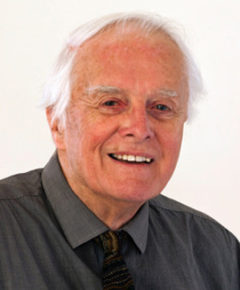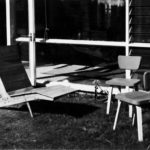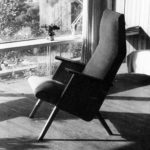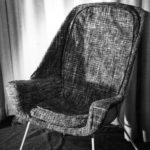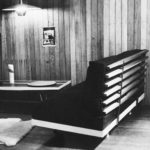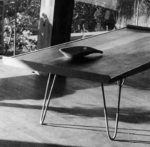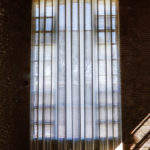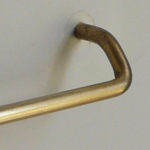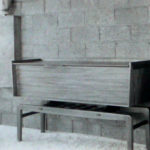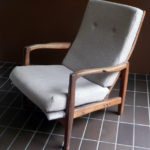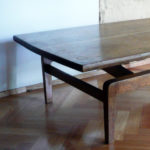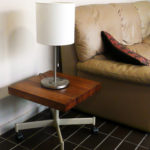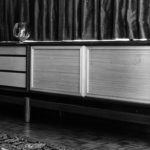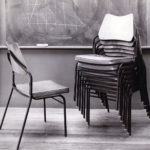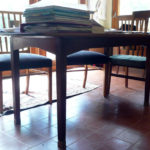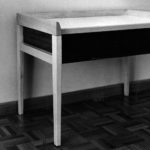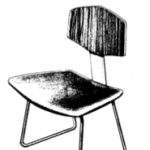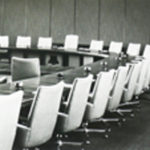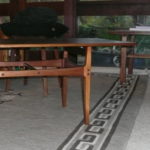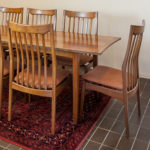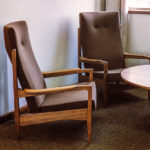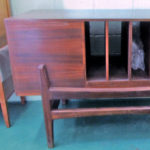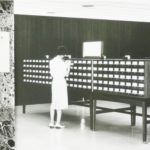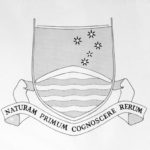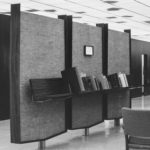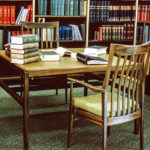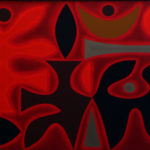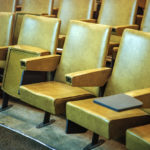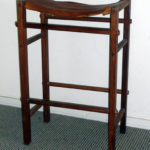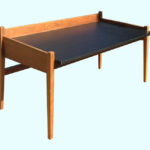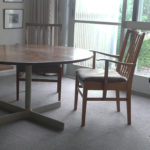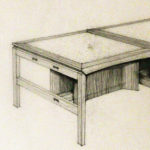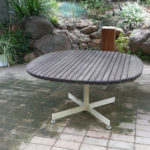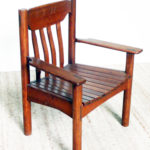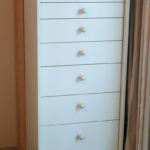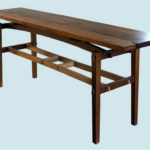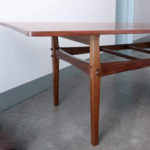Furniture has been a significant interest in my design career and is reported in more detail under the headings of MY LIFE OF DESIGN OVERVIEW 1940-2015 and also in
ANU TOTAL DESIGN OVERVIEW 1957-1977.
This section of files on my furniture shows examples of my designs covering about 75 years of my activity in some detail, from which it may be possible to detect any changes.
Overall, it strikes me as being remarkably consistent, particularly when I have never received any training in furniture design – other than any osmotic transference from Fred Ward when I joined him in the ANU Design Unit in 1957. In some ways this shows the integrated nature of design fundamentals in that my training in architecture prepared or influenced me for my furniture period which was largely with Fred Ward in the ANU Design Unit from 1957 – 1961.
Fred had a style of his own which followed no evident fashion outside the ANU and I like to think that my style developed from a rational need, based on available materials and machining techniques and, of course economy and lack of redundancy and ornament.
This overview identifies some time periods or projects which group some of the pieces :
1940-1950
England and Australia; tentative unsophisticated trials to satisfy specific needs with very limited tools and working space. The surprising exception was the 1945 fireplace surround for our house in Oldham for which I prepared my first drawings from which others could work.
1952-1955
Needs-driven furniture for my second house OB2 at DeeWhy all made by me with a better variety of tools acquired for house building. Largely experimental using steel rods and plywood sheets. The fibreglass armchair (1953) was a leap in the dark, using a home-made plaster mould and the new material polyester resin and woven glass fibre which had just become available in Australia.
1955
I entered a furniture design competition and won First Prize, organised by the progressive Parker Furniture Co, Sydney.
1958
Now in Canberra with Fred Ward. Designed a free-standing record player unit for Professor Bruce Benjamin – a more professional and confident piece made by Kees Westra, a cabinet maker in Fyshwick.
Our new house was being built at 14 Jansz Cresc. Griffith and needed furniture so I designed loose wardrobes, beds, easy chairs, coffee table and a full dining suite for our family. Rapidly gaining confidence in furniture design.
1959
Designed the conference chamber seating for the new Academy of Science in Acton, designed by Sir Roy Grounds. These were architectural furniture, large and comfortable, fully integrated with the air conditioning system.
Maurice Kuner, a Canberra industrialist asked me to furnish his new house in Melbourne Avenue, Forrest. Easy chairs, dining suite, side tables, buffet, etc.
My domestic style was emerging with professional confidence, similar but different to Fred’s style.
1958
I fitted easily into the design ethos established by Fred and my own style was beginning to emerge in timber and in steel framed furniture, more suited to rugged undergraduate use in the science precinct and halls of residence.
At that early stage I was quite happy to respectfully fit in with Fred’s established style in timber because it was a good answer to the ANU need – it was simple, economical, rugged and easily made with the usual machinery found in any good joinery and cabinet making workshop and it was suitable for the tendering process which was mandatory for the spending of public money. Hence, it was unquestionably ‘good design’ for its purpose. To have introduced any avant garde style would have been disrespectful and unforgiveable when consistency of approach was such an important element of a design integrated campus.
1960s
Designer ego has to be carefully watched, particularly when new designer members of the ANUDU joined us at various times – such as Arthur Robinson, Gerald Easden and Charles Bastable. All of whom I am happy to say agreed with our philosophy in any new designs they produced under our flag, satisfying their individuality while still maintaining ANU / Fred Ward quality.
The presence of these designers at intervals following Fred’s leaving ANU in 1961 gave me time to devote to running the Unit and giving more attention to the Total aspect of integrating the other design arts – graphics, site planning and in particular the series of lecture theatres which enabled us all to contribute to iterative and integrated designing. The Coombs theatre in 1963, followed by the RS Chemistry, RS Physical Sciences Huxley theatre, SGS Law, Botany /Zoology.
The 60s was a great period for design in the ANU and we pushed the envelope in several areas which showed the potential for iterative applications with a consistent driver of a beneficial policy for the institution.
This period also showed the beginning of ‘management’ in the administration – a force which used money as the arbiter of everything, paying little respect for quality outcomes which, more often than not, were unquantifiable or which satisfied global needs such as the emerging realisation of anthropogenic activities on our world – global warming and climate changes – and how better, more informed and courageous design could play a more significant role.
“Business Managers” appeared in the various schools and faculties throughout ANU with differing approaches which had the effect of driving wedges into our integrated design approach to ANU furnishing. These managers had little or no experience of working with designers and the continuing influence of the ANUDU as a coordinating and integrating force became more difficult.
Coupled with this was the enlightenment of the furnishing industry to the needs of educational institutions – firms like Aristoc Industries in Melbourne appeared with their own solutions to some of the problems we had faced earlier and found our own answers to – theatre chairs with tablet arms – unit seating with lift up seats and tablets (which did not meet ACT Fire Regulations). Our Total Design iterative approach was beginning to be undermined by commercially available specialised furniture which often did not meet our needs and which some of the ANU Business Managers did not understand.
1970s
There was a distinct slowing of the building program in this period and my attention as University Architect was beginning to be absorbed by the emerging need for sustainability issues, energy saving in buildings and the need for a more sensitive approach to the solar gain aspects of building design.
I designed a solar passive house with integrated water heating absorber panels in association with Lou Parker and Ken Harrison (ANU Engineering) and although Dorothy Harvey (Housing Officer) was in favour of building one the funds were not forthcoming. That was a lost opportunity – no administrative vision.
I resigned in 1977 into private practice and inaugurated The New Millwrights.
